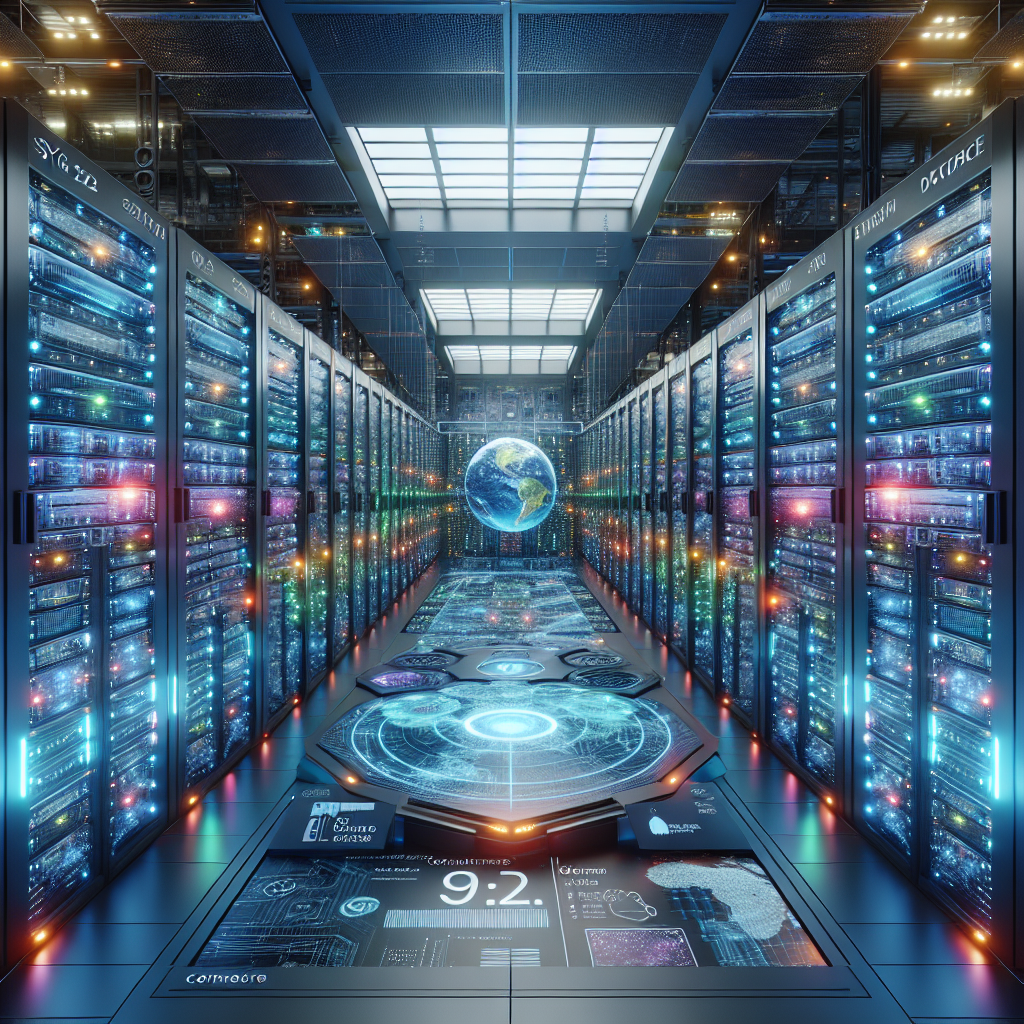Generative AI and Weather: Quantifying Uncertainty for Smarter Predictions

The future of weather forecasting isn't just about refining existing models; it's about rewriting the rules entirely, and generative AI is holding the pen.
The Shift from Deterministic to Probabilistic
Traditional weather models operate on a deterministic approach, attempting to pinpoint a single, definitive outcome. Think of it like rolling a die and predicting exactly which number will appear. Generative AI, however, embraces the inherent uncertainty of weather systems. It shifts us towards probabilistic forecasting.
This means instead of saying "it will rain tomorrow," a Generative AI enabled model might say "there's an 80% chance of rain, with a 60% chance it will be heavy."
This nuance is crucial for decision-making, allowing us to better prepare for a range of possibilities.
Generative AI vs. Traditional Weather Models
While traditional models rely on solving complex equations derived from physics, generative AI learns patterns directly from vast datasets of historical and real-time weather information. It's the difference between meticulously crafting a sculpture and growing it organically. Here's a snapshot comparison:| Feature | Traditional Models | Generative AI Models |
|---|---|---|
| Approach | Equation-based (Deterministic) | Data-driven (Probabilistic) |
| Data Needs | Relatively Limited | Enormous |
| Computational Cost | High | Potentially Lower (After Training) |
| Ability to Capture Complexity | Limited | Higher potential for nuance and unforeseen patterns |
More Realistic and Nuanced Simulations
One of the most exciting aspects is generative AI’s ability to create more realistic and nuanced weather simulations. Imagine seeing not just a prediction of rainfall, but a visually accurate representation of how that rain might fall across your specific region, factoring in local topography and microclimates. This level of detail offers unprecedented potential for fields ranging from agriculture to disaster preparedness. If you're looking to dive deeper into AI applications, check out this AI Explorer Guide.The arrival of generative AI in weather forecasting isn't merely an incremental improvement; it's a quantum leap towards smarter, more resilient, and more insightful predictions, ultimately redefining how we interact with the world around us.
Uncertainty, the Final Frontier: How AI is Quantifying the Unknowns of Weather
Weather forecasts are increasingly accurate, but can we really know what's coming? Generative AI is helping us quantify the uncertainty inherent in predicting something as complex as the weather.
The Challenge of Weather's Uncertainty
Traditional weather forecasting relies on deterministic models, which produce a single "best guess" outcome. But the atmosphere is chaotic; tiny variations can lead to drastically different results. This means:
Traditional methods struggle to capture the full range of possible* weather outcomes.
- They often underestimate the likelihood of extreme events. Imagine missing a flash flood warning because the model predicted only light rain.
- Quantifying uncertainty is crucial for effective decision-making, from agriculture to disaster preparedness.
Generative AI: A Probabilistic Approach
Generative AI offers a powerful way to address these limitations by generating multiple, equally plausible weather scenarios. This provides a measure of the uncertainty surrounding a forecast. Instead of a single prediction, we get a distribution of potential outcomes. This approach makes use of AI variational autoencoders weather forecasting, which are particularly useful for complex data.
Think of it like this: instead of saying "it will rain," we can say "there's a 60% chance of rain, with a 20% chance of heavy rain and a 20% chance of sunshine."
How It Works: VAEs and GANs
Two key generative AI techniques are making waves:
- Variational Autoencoders (VAEs): VAEs learn the underlying probability distribution of weather data, allowing them to generate new, realistic weather patterns. This is a good introduction to AI Fundamentals.
- Generative Adversarial Networks (GANs): GANs involve two neural networks competing against each other – one generates weather scenarios, and the other tries to distinguish them from real data, improving the realism of the generated forecasts.
Quantifying Uncertainty for Smarter Decisions
By generating multiple plausible weather scenarios, AI enables better risk assessment and informed decision-making. We can use this insight to inform the general population through AI-Powered Semantic Search. We are then able to adapt our strategies to deal with any expected situations. Imagine:
- Farmers making planting decisions based on the probability of drought.
- City planners preparing for a range of flood scenarios.
- Energy companies optimizing grid operations based on wind and solar power forecasts.
Generative AI is poised to redefine our relationship with weather forecasting, moving beyond simple predictions to quantifying uncertainty with unprecedented detail.
Beyond Prediction: Use Cases and Real-World Applications of Generative AI in Weather
Generative AI offers capabilities that traditional weather models simply can’t match, opening doors to a wealth of real-world applications. Instead of a single weather forecast, imagine receiving a range of probable scenarios, each with an associated likelihood.
- Short-Term Forecast Improvements: Generative AI enhances resolution and accuracy, especially for rapidly changing conditions.
- Long-Term Climate Modeling: AI simulates complex climate interactions, providing a deeper understanding of long-term trends. For scientists, scientific research AI tools assist in simulations and data analysis.
Predicting the Unpredictable: Extreme Weather Events
One of the most crucial applications lies in generative AI for hurricane prediction and other extreme weather events. Traditional models struggle to accurately predict the intensity and trajectory of hurricanes. By generating multiple plausible scenarios, Generative AI provides a probabilistic view, enabling better preparedness. Consider the recent advances with Midjourney, and what is now possible with even more sophisticated AI for hurricane paths and flood zones, offering simulations and data to prepare cities.
Imagine AI painting numerous possible flood maps, each reflecting different rainfall patterns, giving disaster response teams crucial insights.
Applications Across Industries

The impact extends far beyond meteorology. Here are a few examples of AI applications in agriculture weather:
- Agriculture: AI applications in agriculture weather are used to optimize crop planting schedules based on probabilistic weather forecasts. Imagine farmers using AI to simulate different planting dates against a range of weather scenarios, mitigating risks and maximizing yields.
- Disaster Management: Generative AI is key to anticipating and responding to extreme weather, improving evacuation plans and resource allocation.
- Renewable Energy: Precise weather forecasts are vital for optimizing energy production. The AI can forecast wind speeds and solar radiation levels.
The weather forecast, once a relatively simple prediction, is now poised to benefit from AI's transformative power.
Why Probabilistic Forecasts?
Deterministic forecasts, which give a single "best guess," often fall short because they don't adequately convey uncertainty. Probabilistic forecasts, on the other hand, provide a range of possible outcomes with associated probabilities. Consider this:
- Deterministic: "It will rain tomorrow."
- Probabilistic: "There's a 70% chance of rain tomorrow; if it rains, we expect between 0.1 and 0.5 inches."
Generative AI's Edge
Generative AI excels at creating realistic simulations, enabling it to provide more accurate probability estimates by:
- Analyzing vast datasets: AI can process historical weather data, current conditions, and climate models faster and more comprehensively than traditional methods. Data Analytics tools now make this process easier and more accessible than ever.
- Quantifying uncertainty: Instead of giving a single prediction, AI can generate numerous potential weather patterns, each with a probability score.
Risk Assessment and Fairer Outcomes
AI algorithms can be trained to identify and mitigate biases in weather data and modeling. This is particularly crucial because:
- Historical data may be incomplete or skewed, leading to inaccurate forecasts for certain regions or demographic groups. AI can be used to fill in the gaps and correct for these biases.
- More equitable outcomes: By reducing AI bias in weather forecasts, we can ensure that everyone has access to the information they need to prepare for severe weather events, such as the use of AI for Scientists.
Generative AI isn't just predicting the weather; it's quantifying uncertainty and making forecasts more reliable, equitable, and actionable, thus unlocking the benefits of probabilistic weather forecasts. This will lead to smarter decisions across sectors, from agriculture to disaster preparedness. The future of weather forecasting is not about certainty, but about intelligently managing uncertainty.
Navigating the Labyrinth: Challenges and Limitations of Generative AI in Weather
Generative AI offers the alluring promise of revolutionizing weather forecasting, but the path is not without its thorns.
The High Cost of Creation: Resources and Data
Generative AI models, while potent, are resource-intensive beasts.- Computational Costs: Training these models demands significant processing power and energy, raising environmental and economic concerns.
- Data Requirements: They thrive on vast datasets. Gathering, cleaning, and managing meteorological data at the scale needed is a colossal undertaking. For example, historical weather data is not uniformly available or formatted.
- Example: Consider the computational resources required to train a generative model capable of simulating global weather patterns at high resolution.
The Mystery Within: Interpretability and Explainability
While these models can predict, understanding why they predict what they do remains a challenge.- Black Box Problem: These complex neural networks often function as "black boxes," making it difficult to trace the reasoning behind their forecasts.
- Explainable AI (XAI) in Weather Forecasting: The need for explainable AI in weather forecasting is critical. We need to know why a model predicts a severe thunderstorm versus a light drizzle.
- Long-tail keyword: The need to bridge that gap and build explainable AI in weather forecasting is apparent.
Echoes of Bias: Amplifying Existing Issues
AI models are only as good as the data they're trained on.- Data Bias: If the data contains biases, the AI will amplify them, potentially leading to inaccurate or unfair predictions in certain regions or for specific weather phenomena.
- Example: If historical weather data is skewed towards urban areas, the AI might perform poorly in rural settings.
- This is not only a mathematical issue, but a social and political one, too.
Verifying the Vision: Validation and Verification
Trusting an AI-driven forecast requires rigorous validation and verification.- Ground Truth Challenge: Validating complex weather forecasts against real-world observations is difficult, especially for extreme or rare events.
- Metrics and Benchmarks: Establishing robust evaluation metrics and benchmarks for AI-driven weather forecasting is essential. How do we compare a human-generated forecast versus an AI output?
In essence, while Generative AI offers incredible possibilities for forecasting, realizing its true potential hinges on addressing these challenges head-on. Next, let's consider potential solutions.
Here's a forecast: AI is about to revolutionize weather prediction as we know it.
AI Ensemble Forecasting: The Power of Many
Forget relying on a single model; AI ensemble forecasting methods are the future. Instead of one prediction, we use multiple AI models, each slightly different, and combine their outputs. Think of it like consulting a panel of experts – you get a more balanced and robust forecast. This approach helps to quantify uncertainty and improves accuracy, especially for extreme weather events. Imagine a weather forecast that tells you how likely it is to rain, not just if it will.
It's not just about being right, but also about knowing how wrong you could be.
Personalized Weather Forecasts AI: Your Microclimate
Soon, your weather app won't just tell you the general conditions for your city; it will predict the weather right where you are. Personalized weather forecasts AI will take into account factors like building density, local topography, and even your own sensor data (think smart thermostats and connected cars) to create ultra-localized forecasts. Imagine knowing the exact temperature and wind conditions in your garden before you even step outside. It's weather prediction, tailored just for you.
Collaboration is Key
The full potential of AI in weather forecasting won't be realized in isolation. It requires a trifecta:
- AI researchers pushing the boundaries of what's possible.
- Meteorologists providing domain expertise and validating models.
- Policymakers understanding the implications for climate resilience and resource management.
The Long View
In the long run, AI could fundamentally change how we understand weather and climate. It can help us identify subtle patterns, predict long-term trends, and potentially even influence weather systems (geoengineering, anyone?). The ability to simulate and predict weather phenomena with unprecedented accuracy will be crucial for adapting to a changing climate and mitigating its impacts.
Generative AI is not just a buzzword; it's a powerful tool for understanding and navigating our increasingly complex world, and weather forecasting is just the beginning.
Generative AI isn't just about creating cat pictures; it's poised to revolutionize weather forecasting, offering unprecedented insights for professionals.
From Data to Decisions: Actionable Insights for Professionals

Here’s how you can harness the power of generative AI for smarter weather-related decision-making:
- Quantify Uncertainty: Generative models excel at creating multiple possible scenarios. Instead of a single forecast, imagine receiving a range of outcomes with associated probabilities. This empowers better risk assessment. For instance, a farmer could use these probabilities to decide whether to protect crops from frost, or a construction manager on whether to halt operations due to high winds.
- Tailored Insights: Leverage generative AI to synthesize complex weather data into actionable insights. For example, instead of raw precipitation data, ChatGPT could provide a plain-language summary of expected flood risks for specific geographical areas.
- Enhanced Planning: Incorporate AI-driven weather forecasts into your planning cycles. Generative AI models can predict extreme weather events with greater accuracy, allowing businesses to proactively adjust supply chains, staffing levels, and emergency response plans.
- Resource Exploration: Expand your understanding by exploring resources like the AI Explorer to learn more about similar AI applications across fields. You can also dive into the AI Glossary for definitions of key AI terms.
AI Weather Checklist: Implementing AI Weather Solutions
| Step | Action |
|---|---|
| 1. Define Objectives | Identify specific weather-related decisions you want to improve (e.g., supply chain optimization, risk mitigation). |
| 2. Data Assessment | Evaluate the quality and availability of your existing weather data sources. |
| 3. Model Selection | Choose a suitable generative AI model based on your objectives and data (consider factors like accuracy, interpretability). |
| 4. Integration | Integrate the AI model with your existing systems and workflows. |
| 5. Validation & Refinement | Continuously validate the model's predictions and refine it with new data. |
| 6. Training | Check out Prompt Engineering for effective model training. |
In summary, generative AI offers powerful tools for navigating weather uncertainty. By quantifying probabilities, tailoring insights, and providing advanced warning, it empowers professionals to make more informed and resilient decisions. Continue exploring the world of AI tools at our Top 100 AI tools list, and discover how implementing AI weather solutions can transform your organization’s resilience.
Keywords
Generative AI weather forecasting, Uncertainty quantification AI, AI for weather prediction accuracy, Generative models for climate modeling, Improving weather forecasts with AI, AI-driven probabilistic weather forecasts, Deep learning for weather uncertainty, AI weather forecast bias reduction, Explainable AI in weather forecasting, Generative AI limitations weather, AI ensemble forecasting methods
Hashtags
#GenerativeAI #WeatherForecasting #AIandClimate #UncertaintyQuantification #AIinScience
Recommended AI tools
ChatGPT
Conversational AI
AI research, productivity, and conversation—smarter thinking, deeper insights.
Sora
Video Generation
Create stunning, realistic videos and audio from text, images, or video—remix and collaborate with Sora, OpenAI’s advanced generative video app.
Google Gemini
Conversational AI
Your everyday Google AI assistant for creativity, research, and productivity
Perplexity
Search & Discovery
Clear answers from reliable sources, powered by AI.
DeepSeek
Conversational AI
Efficient open-weight AI models for advanced reasoning and research
Freepik AI Image Generator
Image Generation
Generate on-brand AI images from text, sketches, or photos—fast, realistic, and ready for commercial use.
About the Author

Written by
Dr. William Bobos
Dr. William Bobos (known as 'Dr. Bob') is a long-time AI expert focused on practical evaluations of AI tools and frameworks. He frequently tests new releases, reads academic papers, and tracks industry news to translate breakthroughs into real-world use. At Best AI Tools, he curates clear, actionable insights for builders, researchers, and decision-makers.
More from Dr.

